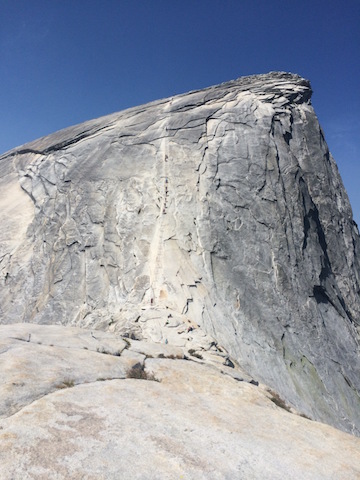7 Must Visit Onsens in Japan
People who know me know I am obsessed with visiting hot springs in every country I visit (for more context, check out my posts on hot springs of Budapest and California). Lucky for me then that Japan is the land of onsens seeing as it sits on the Rim of Fire and has bubbling hot water everywhere! In this post, I’ll discuss onsen culture, etiquette, and highlight the most unique and must-visit onsens of Japan.
What is an Onsen?
Onsen is the Japanese word for ‘hot spring’. Since Japan has so much volcanic activity, there is a proliferation of natural hot springs. Such a part of Japanese culture, you can find the symbol for hot spring all over road signs in Japan. While bathing in onsens used to be a mixed-gender activity, after Japan became exposed to the ‘West’, segregated bathing became the norm.
Why Onsen?
Japan is a really popular country to visit right now. Sometimes it feels like you can’t get away from the tourists. Onsens however are a nice way to experience authentic Japanese culture in the company of real Japanese locals. Many locals are members of their onsens and go quite frequently to relax and recover from ailments. If you are looking for a way to feel a little out of place as a foreigner but experience a truly unique and genuinely Japanese cultural component, you must onsen!
Onsen etiquette, process, and what to bring
Now, to the point above, you don’t want to just walk into an onsen unprepared. Etiquette and proper preparation are important in Japanese culture and foreigners are not excused. Many of these items are provided or you can pay for them at the nicer onsens, but the older and more authentic ones do not provide:
- Flip flops
- A towel
- Shampoo / soap for bathing
Process
- Buy a ticket/token to the onsen of your choosing
- Use ticket/token to obtain a locker for your belongings
- Undress and store all items in your locker
- Clean yourself before entering any pools. This includes soaping up head to toe (including your hair). Cleanliness is very important in Japan and of course in the onsens. You should be clean before you go into the tubs, so as not to soil them for others. The bathing can either be a traditional ‘western’ standing showering or more commonly, a squatting stool style Japanese bathing station using buckets and hand shower attachments.
- Enter the onsen and enjoy! No talking, please!
Onsen Etiquette
- Never cleanse yourself in the Onsen pools themselves, they are for soaking only
- Never enter with a bathing suit (nude only!)
- Never dip your towel into the onsen pools
- Avoid dunking your head underwater
- Never bring glass into the onsen (it is also frowned upon to bring a water bottle or eat and drink in the pool area – there are usually very specific places to do so in the onsen complex)
- Never stare directly at other people’s bodies while in the Onsen or while bathing
- If you have a tattoo, check before entering an onsen to see if tattoos are allowed. Traditionally, they are not. Sometimes onsens will allow you to cover your tattoo while bathing.
Now that you have been properly briefed, check out the top onsens of Japan below!
Top Onsens of Japan
If the above image does not render, click here.
Kyoto’s Tenzan no Yu Onsen
This beautiful onsen in Kyoto makes the cut on this list for it’s authenticity combined with comfort. Part of a medium sized complex, Tenzan has a cafeteria, massage chairs, and even fish that eat the dead skin on your toes! Inside the actual onsen there is a very large outdoor area with typical Japanese landscaping. Inside, there are a number of different pools with jets at different levels (feet, abdomen, back), different temperatures, and even a steam room and sauna.

2. Yunomine’s Hot Spring town (Kumano Kodo Pilgrimage)
Yunomine is unique on this list because it’s not home to just one hot spring. The whole town is a living, breathing hot spring. This town is a stop on the UNESCO world heritage pilgrimage Kumano Kodo, and these holy springs have been visited by Japanese commoners and emperors alike for over a thousand years. In the center of town there is the ‘public’ onsen, which for only a few Yen you can enjoy. This onsen is the most rustic one you will probably visit and comes with no amenities, so bring your towel and other necessities. If you go on a not too busy day, you might be able to snag a reservation in the UNESCO world heritage onsen Tsuboyu, which sits directly over the river. While you bathe, you can also enjoy hard-boiling your very own eggs in the boiling river!


3. Osaka’s Spa World
Osaka’s spa world is unlike any other Onsen you will visit. It more closely resembles the Korean mega-spa. With an entire building and 8 stories of gyms, cafeterias, hot springs, swimming pools, and a game room, you could spend a whole day here. The spa is designed so that you can feel like you are visiting all the different kinds of spas of the world, and in that vein the complex is split into two main themes: ‘Asian’ style spas (think Persian, Islamic, and Japanese style pools), and ‘European’ style spas (think Greco-Roman, Finnish style pools). The complex rotates which set of spas are available to men or women every month, so depending on when you go you will only get to experience one of the spa styles. In both male and female sections, there is an extensive outdoor Japanese onsen. If you are looking to try a little bit of everything, this might be the place for you!

4. Hakone’s Lake Hotel
Hakone in general is known as a major hot spring area in Japan, and is very scenic as it sits on a lake at the foot of Mt. Fuji. A lot of the onsens in Hakone are part of larger hotel complexes, since Hakone is a resort town that Tokyo locals visit to in order to escape into nature. At this particular hotel, there is a small but comprehensive onsen set up with an indoor modern large jacuzzi and outdoor Japanese style onsen tubs. They even have a Finnish style igloo steam room. This onsen feels very private and is quite close to Hakone Lake.

5. Hakone’s Hotel Green Plaza
At this onsen, also inside a large hotel in Hakone, the main benefit is that besides the indoor and outdoor pools (with the outdoor pool having a very pleasant rock/natural hot spring vibe), on a clear day you can see Mt. Fuji while you bathe!

6. Footbath Onsens of Kii-Kaatsura
Kii-Kaatsura is a small transit transfer town right along the Pacific Ocean, on the eastern coast of Honshu island. Since so many travelers pass through this place, it is now known for it’s collection of tiny footbath onsens. If you are short on time there is an onsen in the train station! I recommend however walking about 3 minutes towards the fishing port to visit one of the larger foot baths along the waterfront (search for 海の湯 on google maps or check the map I provide). All of these footbaths are free.

7. Onsens in any Ryokan you visit

Most authentic ryokans (Japanese guest houses) have a private onsen which you can use during your stay. Make sure to ask about these when booking your accommodation!
Which onsens am I missing? Comment below!






